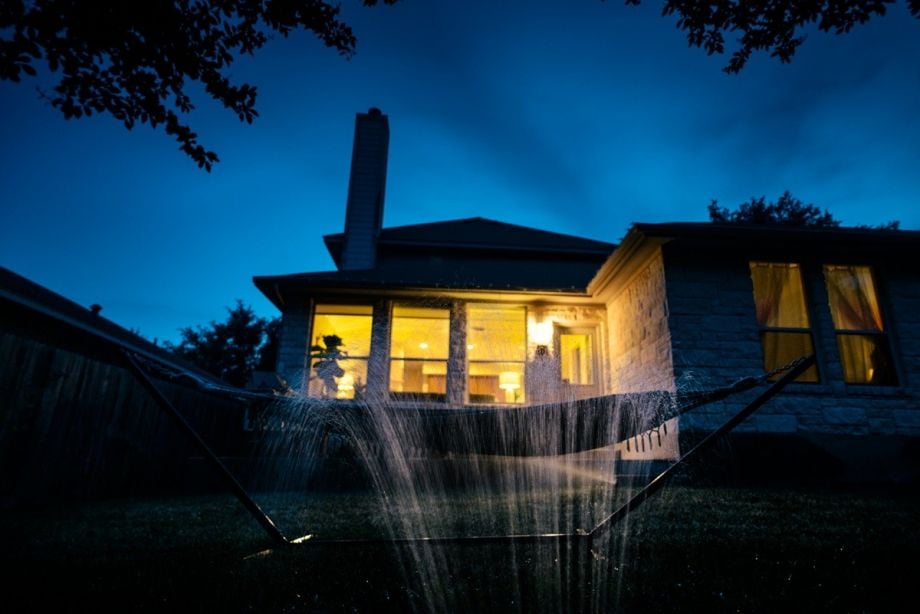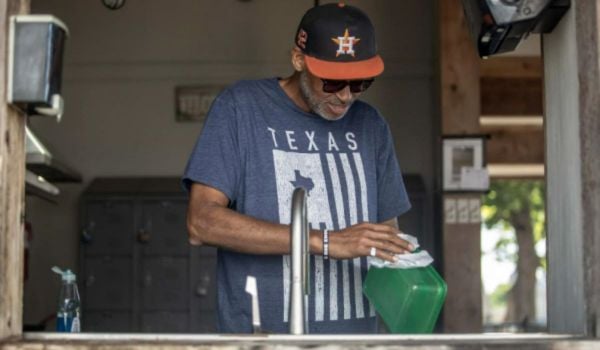A lot of what Laura Huffman cares about comes down to the question of water. Since 2008, Huffman has been the Texas state director for the Nature Conservancy, a national organization dedicated to the conservation of natural resources. She has been deeply involved in water management issues since her days in the city governments of both San Marcos and Austin, where she worked on watershed protection efforts.
During her time at the Nature Conservancy, the group has worked to expand its holding in the Barton Creek Habitat Preserve, helping protect the vital Edwards Aquifer and the Barton Springs Pool, one of Austin’s top recreational facilities.
Huffman will participate in an October 7 panel at SXSW Eco on the topic of “How to Future-Proof Our Cities.” Here she talks about the importance of an upcoming ballot initiative that would help kick off a 50-year water plan for Texas, how the state’s ongoing drought is changing public awareness of water conservation, and whether dwindling water supplies could hamper rapid economic growth.
Next City: What makes water a defining issue for Texas’s future?
Huffman: If you look at water scarcity maps, Texas shows up bright red. The global trends that are going to drive how we do conservation in the modern world are all happening in Texas. Our population is doubling: By 2060 we will have gone from 25 million to 50 million. And the urbanization trend is more important than people realize. Right now, Texas has six of the 20 largest cities in the country, and three or four of the fastest-growing cities in the country. So we are an urbanized state.
That means a couple of super obvious things on water. First of all, we have a growing number of people sharing a very limited resource. Second of all, cities have completely lost their ability to provision water on a local basis, so they have to start thinking about the state as the future water supply. And that kicks into play all the stuff about which water wars are fought.
Also, Texas has a really strong agricultural component to its economy. About 60 percent of the water in Texas is used to grow food. And we’ve got an almost completely isolated electric utility grid, so we control essentially our own fate with electricity, which is super important, since water is an expensive and important ingredient in making electricity. So you just have this cauldron of factors.

Laura Huffman
Next City: What is the significance of the water plan on the November ballot?
Huffman: Here’s what I think is really, really important: Water has become both a local and a statewide issue. There’s not very many water users that are situated in such a way that they can solve their own water problem locally. The state water plan sets in motion probably three things that I think could help positively impact the future of Texas, that could make Texas a leader maybe even globally in how we solve the challenges of this problem of water scarcity.
First, understanding and funding conservation as a water supply is great strategy. Thirty percent of the money will be set aside so that we can fund the most important aspect of that plan, which is just dialing use back across every single categorical user of water — ag, cities, and energy and industry. Over a quarter of our future supply is already scheduled to come from conservation. As a conservation organization, I think that’s heading in exactly the right direction.
The second thing is the plan itself. It’s time for cities to start sorting through the projects that they think they want to do and start prioritizing the projects that they’re going to do. And that has to do with the cost, the reliability of the supply that is being contemplated, and the environmental impact. That’s how we’re going to start sorting through reservoir projects versus groundwater projects versus brackish desalinization projects versus aquifer storage.
The third thing may seem small, but I think it’s going to end up being important. That plan has to be updated every five years. In Austin, we thought it would be decades before the city had to think about an alternate water supply. And this drought is teaching us that that’s not true. It’ll be far sooner than that.
NC: What is Texas doing right that might serve as a model for other places grappling with water scarcity issues?
Huffman: El Paso a long time ago started dialing back per-capita water use. They knew. People get creative when water gets scarce. They have a brackish desalination plant in El Paso. They’ve got very strict landscape ordinances in the city. In other words, people are not crying about St. Augustine grass in that part of Texas because they long ago understood that that was an appropriate tradeoff to have secure water into the future.
San Antonio has an aquifer storage program that has been wildly successful. That’s a different way to store water than the traditional reservoir, which avoids evaporation. There are aquifers all over Texas, and that type of storage could be a really important going-forward way to store water and protect aquifers.
NC: What about the impact of fracking, both on water supply and on water quality?
Huffman: A terrific question and one that I think is a little bit under-discussed. The reason is that if you look at water use on a statewide basis, fracking comes out as a relatively small slice of the pie. But it’s really important for people to realize that where fracking plays are happening, fracking water is a huge piece of what’s happening inside the basin. So as a statewide number it’s not that big, but as a local number it can be very big.
I think technology is going to be our friend here. About five years ago, pretty much everyone who was fracking was using fresh water. And we have seen a pretty fast shift over to brackish water. That’s very interesting to us because first of all, agriculture cannot use brackish water because it’s salty and kills crops. And cities will use brackish water, but it is still more expensive to treat than regular fresh water. And there’s a product that you need to get rid of at the end of the process.
But fracking does not have any of those problems, because the salt is apparently not counter to what they need. Brackish water is to me a very understudied and underappreciated commodity in Texas. And probably one that needs the most exploration in these five-year updates. There are some estimates that in the next five years there will be a lot of dry fracking and it won’t require water at all. And those are the technological advances that we want to keep our eye on.

Credit: Kelly Lynn James
The question about quality is also really important. A lot of the water at the end of the fracking process is deep-well injected. Texas did pass a law in 2011 that required some disclosure about what exactly is in the water. As I understand, it was one of the first laws of its kind on the books. Is it as strong as it needs to be? No. But the first step in all that was to require some disclosure so that locally, you can be aware of what’s in that water.
NC: Do you think that the shrinking availability of water resources could ever put a limit on the growth that Texas is experiencing?
Huffman: Oh, absolutely. If it’s not managed right, that’s exactly what it will do. In fact, you’re starting to hear stories pretty regularly of chambers of commerce from other states trying to recruit Texas businesses by saying hey, we’ve got water, come here. Not only would it happen naturally, it would be used to attract businesses out of Texas.
NC: Do you see a change in public awareness of the importance of water conservation? Do you think that’s a function of the drought?
Huffman: I do think there is a heightened awareness because of the drought. I worry a little bit that a wet fall causes people to think that the problem has gone away. Austin has had a couple of rainy weekends here lately, and it only got the lake from 32 percent full to 33 percent full. The important thing for everybody to remember is, our drought of record in Texas was in the 1950s, when we had fewer than 10 million people living here. We’ve got 25 million people living here now. The ability to crawl out from a drought is very different than it was in the 1950s.
Going forward, a big piece of the job is going to be — especially if we see some wet years — finding ways to convince people to fundamentally change their own habits. And we’ve got to convince all the users: Ag, energy, industry, all of it. Because what I worry about is that people simply see this as a drought response. When there’s no drought, people will think they can go back to business as usual. And I just don’t think we can pull it off.
Watermark is made possible with the support of the Surdna Foundation.

Sarah Goodyear has written about cities for a variety of publications, including CityLab, Grist and Streetsblog. She lives in Brooklyn.

















